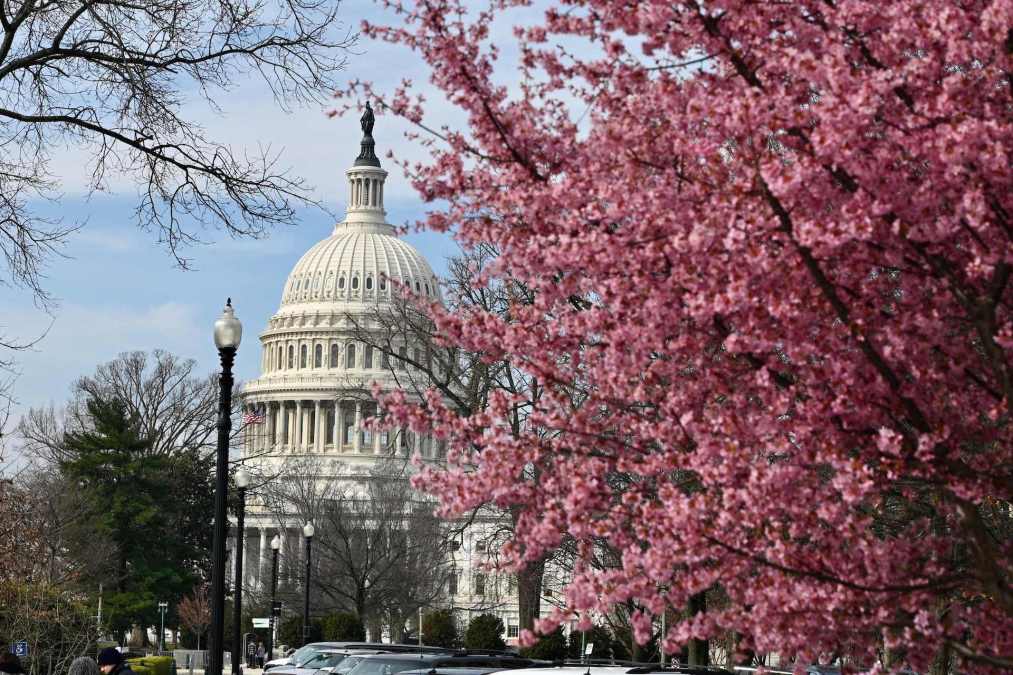$1.5T spending bill is a mixed bag for IT modernization funds

Editor’s Note: This story has been updated with comments from Rep. Gerry Connolly.
The fiscal 2022 spending legislation passed by the House this week doesn’t include any money for the Technology Modernization Fund and would slash or maintain funding for two other federal IT modernization vehicles.
Should the $1.5 trillion bill become law, the Office of Management and Budget’s IT Oversight and Reform Fund would receive $8 million, down $4.5 million from fiscal 2021, and the Federal Citizen Services Fund (FCSF) would receive the same $55 million as last year.
Congress’ decision not to add money to the TMF comes after a major infusion last year. The Biden administration requested $500 million for the TMF this fiscal year. It had received a $1 billion under the American Rescue Plan Act, on top of a regular appropriation of $25 million for fiscal 2021.
“The federal government must maximize the impact of these funds by developing a strategic plan for use of the funds that will prevent duplication of efforts, direct the funds to their highest use and guarantee coordination among agencies,” reads the joint explanatory statement of the bill. “OMB is directed to provide the committees with a detailed strategic plan for use of the funds no later than 60 days after the enactment of this act.”
The TMF Board continues to hand out money in the meantime. It awarded $9 million for two projects at smaller agencies that often lack the budgets and technical staff to sustain initiatives addressing urgent network or cybersecurity challenges.
Agencies struggling with their IT modernization efforts would continue to receive funding to right their respective ships.
The White House also asked for an additional $4.2 million for the FCSF. The fund supports interagency projects digitalizing processes and using IT in innovative ways, and the bill allows up to $5 million to be put toward functions and hiring in support of the Foundations for Evidence-Based Policymaking Act.
On the other hand, the administration requested $10.4 million for the IT Oversight and Reform Fund, a modest $2.1 million cut compared to the current bill, which would allow OMB’s director to transfer the money to agencies’ projects.
The Senate is expected to pass the legislation later this month.
Rep. Gerry Connolly, D-Va., who chairs the House Subcommittee on Government Operations, expressed his “perennial disappointment” with IT underinvestment in the annual appropriations bill but also pointed out the “transformative” $1 billion for the TMF in the American Rescue Plan Act was the equivalent of 40 years of annual appropriations.
“New TMF projects were announced just this week,” Connolly said. “While I wish more robust funding for IT was in this package, we will continue to advocate for additional IT funding in future packages and help educate Congress about the power of IT investment.”
Familiar numbers for VA, IRS
Agencies struggling with their IT modernization efforts would continue to receive funding to right their respective ships.
Of the $4.8 billion allocated to the Department of Veterans Affairs for its IT systems, $2.5 billion would go toward its Electronic Health Record Modernization (EHRM) initiative — $127 million less than fiscal 2021. That money would be contingent upon the department secretary providing quarterly reports to Congress, and 25% of the funding would by withheld until July 1, provided the department presents a plan with benchmarks and metrics for deployment and all infrastructure upgrades 30 days prior.
“While the committees remain supportive of the EHRM initiative and the secretary’s
comprehensive strategic review, as with any acquisition of this size and magnitude, there
continue to be implementation concerns,” reads the joint explanatory statement of the bill. “The funding level and contingency requirement recognize the implementation delays and challenges to date, as well as the need to communicate a clear plan to address infrastructure needs, deploy the new system, monitor progress and demonstrate success.”
The IRS finds itself in a similar situation concerning its Business Systems Modernization initiative, which would receive $275 million — up from $222.7 million in fiscal 2021. That number includes funding for a Customer Account Data Engine 2, enterprise case management system, web applications, taxpayer assistance systems, cybersecurity and data protection.
But the IRS is expected to report to Congress and the U.S. comptroller quarterly on IT investments in its Integrated Modernization Business Plan portfolio including on costs, results, risks and mitigations. That’s in addition to an annual Government Accountability Office audit.
The IRS would also have to include in its fiscal 2023 budget justification a summary of cost and schedule performance information for its major IT systems.
Elsewhere the bill would increase the Office of the National Coordinator for Health IT‘s budget for developing interoperable health IT, and the Fast Healthcare Interoperability Resource standard in particular, by $1.8 million to $64.2 million.
The legislation would require the heads of agencies it funds to ensure their chief information officers are part of their budget planning processes.
On the cyber side, the bill would provide the Cybersecurity and Infrastructure Security Agency with $2.6 billion, an additional $568.7 million compared to fiscal 2021 and $460 million more than the White House sought. The legislation would also require agencies that receive a cyber incident report, including those concerning ransomware, to share it with CISA within 24 hours.
Of the $125 million the bill makes available to the State Department for its diplomatic programs to respond to Russia‘s military invasion of Ukraine, $50 million could be transferred to its capital investment fund for cybersecurity and $15 million used for emergencies in the diplomatic and consular service. The money could also be used to identify the assets of Russian oligarchs and freeze them in coordination with the Treasury Department.






